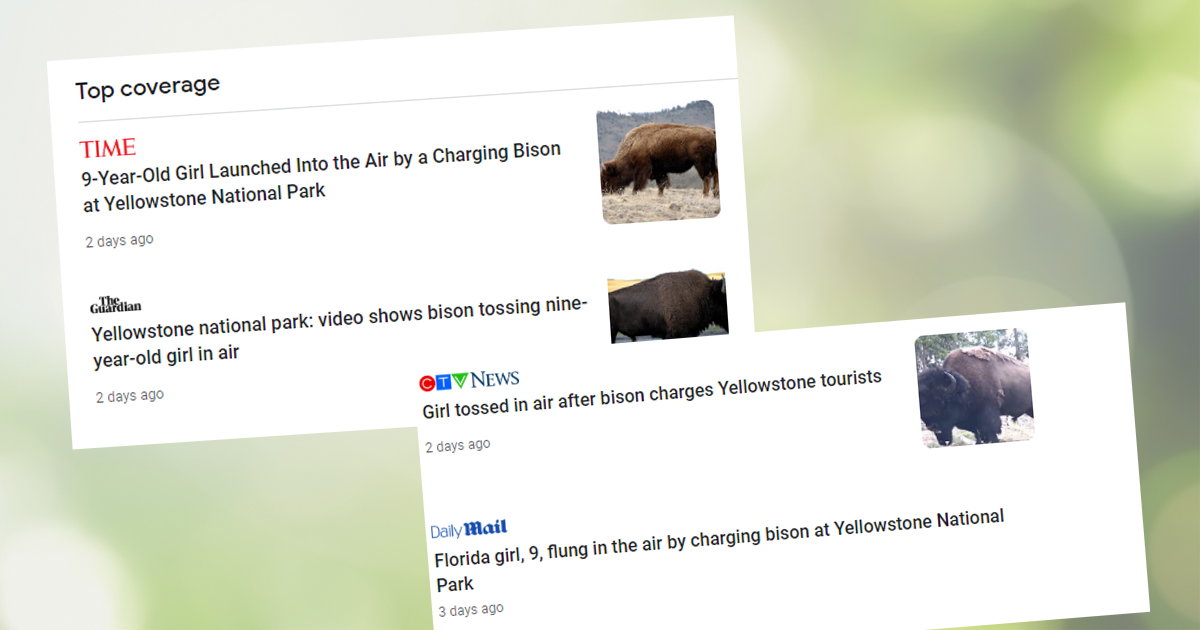
Tourists at Yellowstone National Park got within five to 10 feet of a bull bison earlier this week, which caused the bison to act defensively and respond the only way he could: by pushing them back. Some media reports indicate as many as 50 tourists had swarmed the bison, which resulted in a young girl being injured.
The incident indicates two major problems with the relationship we have with wildlife: the idea that non-human animals should act or behave in a way conducive to our lives (even in protected areas), and how we communicate about non-human animals responding to our behaviours.
Yellowstone National Park (managed by the US National Park Service) in Wyoming has done a strong job of education visitors. It would take a concentrated effort to not see signs warning of feeding and approaching wildlife – and it seems many of the rangers and staff are working hard at providing all of this in multiple languages.
Yet this bison was still swarmed. Can you imagine the scene: 50 visitors approaching an animal that stands six feet high (1.8 metres) and weighs close to 2,000 pounds (900 kilograms). They were within five feet to ten feet of the male bison, roughly the distance if you stood at the trunk of a car and looked to the hood. How this behaviour was thought to be a good idea by any of the individuals there is unfathomable – and one person was injured and likely traumatized by the entirely predictable response of the bison.
But how the media handled the reporting of this news is also disturbing. The Fur-Bearers examined the top 30 results of a Google News search for “Yellowstone Bison” and found that only eight included reference to not approaching wildlife and/or that tourists caused the reaction. The remainder are sadly predictable, as seen by this brief sample: 9-year-old girl tossed into the air by a charging bison; Girl tossed in air after bison charges Yellowstone tourists; and, Florida girl, 9, flung in the air by charging Bison at Yellowstone National Park.
Some of the articles indicated that the bison responded following crowding by the tourists, who were breaching park rules; most articles did not.
What We Can Learn
This incident is reminiscent of bear “attacks” in British Columbia and conflict with other wildlife across North America: human behaviour causing a response in a non-human animal, following which we attempt to refute all responsibility. Traditional and social media reports often skip this important fact, painting the wildlife involved as villains. This can then strengthen inappropriate fear of animals, lead to non-scientific management (often lethal) and harms our ecosystems and relationship with nature through misinformation to the public.
But as consumers of media content we also have power. We can comment (always politely, clearly and with citations) on social media and traditional media posts; we can point out the missing information or misinformation and the importance of its inclusion; and we can talk to friends and family and community about considering the perspective of wildlife in these cases.
We can do betterfor ourselvesand for the animals.

